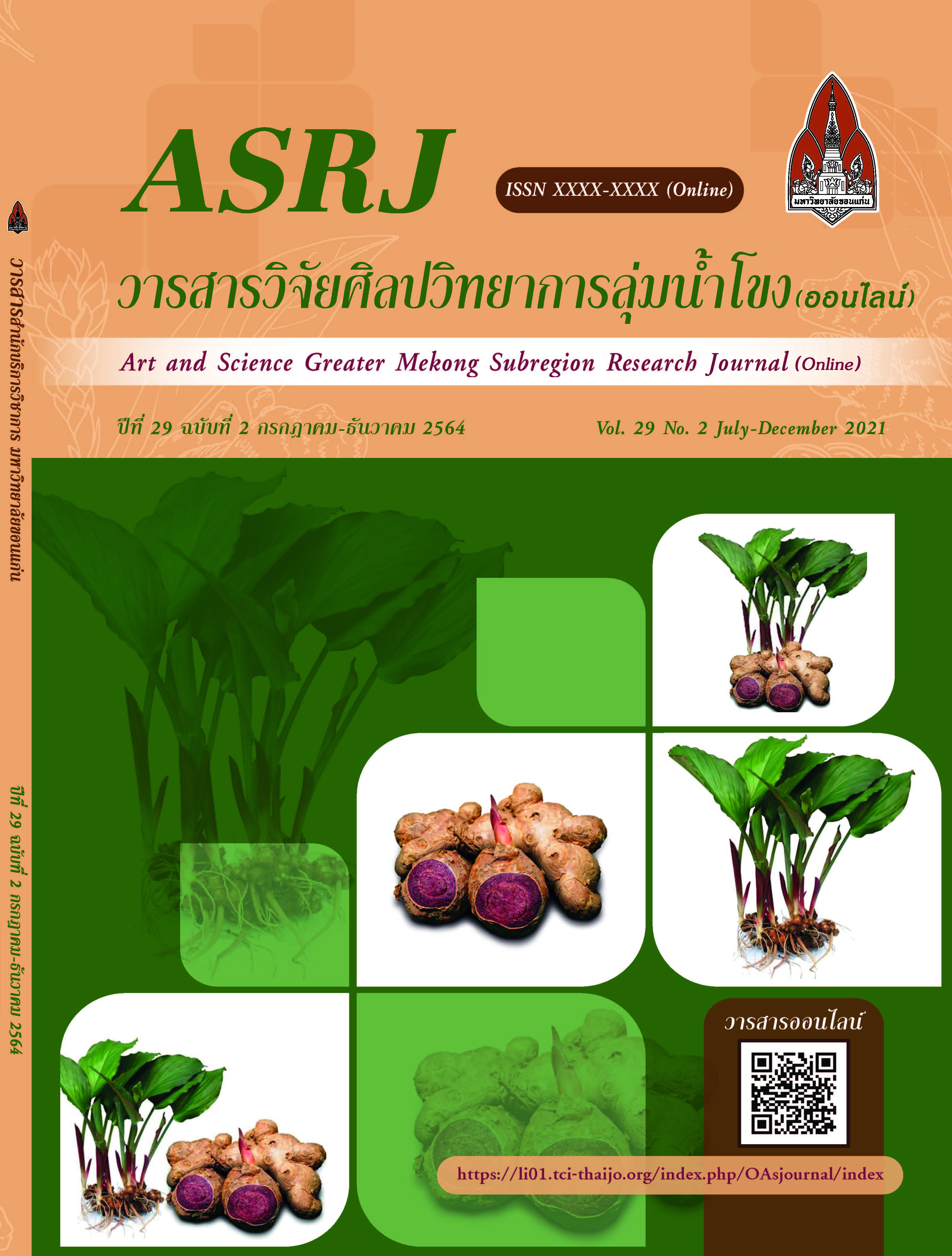กระบวนการพัฒนาตำบลกุดเค้า เพื่อความยั่งยืน Kut Khao Sub-district Development Process for Sustainable
Main Article Content
บทคัดย่อ
บทคัดย่อ
กระบวนการพัฒนาตำบลกุดเค้า เพื่อให้เกิดความยั่งยืน มีวัตถุประสงค์เพื่อพัฒนาพื้นที่ตำบลกุดเค้า ที่ทำให้เกิดการเรียนรู้ร่วมกันและนำไปสู่ผลงานวิชาการ (Knowledge sharing and academic results) ทำให้เกิดการเรียนรู้การปฏิบัติงาน เพื่อไปสู่ความสำเร็จและช่วยสร้างความเข้มแข็งให้แก่ชุมชนการพัฒนาพื้นที่ตำบลกุดเค้า เป็นพื้นที่ที่ถอดแบบการพัฒนาตามกระบวนการทำงานของพื้นที่ตำบลบ้านโต้น ซึ่งอยู่ภายใต้ การดำเนินงานของสำนักบริการวิชาการ มหาวิทยาลัยขอนแก่น ตามแนวทางการพัฒนาชุมชนเชิงพื้นที่ แบบองค์รวม (Holistic Area – Based Community Development) เป็นต้นแบบที่มีผลการะทบ (Impact) ตลอดจนส่งเสริมและดำเนินการขยายผลความรู้ รูปธรรมความสำเร็จจากพื้นที่ต้นแบบไปสู่หน่วยงาน เครือข่ายความร่วมมือและภาคส่วนที่เกี่ยวข้อง โดยมีกระบวนการพัฒนา 7 ขั้นตอน ดังนี้ 1) เตรียมทีมงาน 2) สร้างความสนิทสนม 3) วิเคราะห์และทำความ เข้าใจบริบทของพื้นที่และคนในชุมชนเห็นแนวทางการทำงาน (ข้อมูลทุติยภูมิ ศักยภาพตำบล) 4) วิเคราะห์หาความต้องการของชุมชน (Need Assessment) และสะท้อนข้อมูลกลับคืนสู่ชุมชน 5) วางแผนการทำงาน โดยกระบวนการมีส่วนร่วมในการวางแผน การจัดการในพื้นที่ 6)ดำเนินกิจกรรมการพัฒนา ตามกระบวนการ PDCA และ 7) ขยายผลสู่เป้าหมาย นำไปสู่การถอดบทเรียน
Abstract
Kut Khao sub district Development Process to achieve sustainability. The objective is to develop the area of Kut Khao sub-district that creates collaborative learning and leads to
academic results. These cause learning to work together achieve success and to help strengthen the Kut Khao sub-district developed base on learnings process from Khon Kaen University Ban Ton sub district. model which is under the operation of the Office of Academic Services according to the holistic area - based community development approach. As a model with impact, as well as promoting and expanding of knowledge concrete success from model area to agency cooperation networks and related sectors with 7-steps development process. The step 1) prepare the team, step 2) build intimacy, step 3) analyze and understand the context of the area and people to see the way of working (secondary data, sub-district potential), step 4) analyze the needs of the area (need assessment) and reflect the data back to the community, step 5) plan to work by the process of participating in planning management in the area, step 6) implement development activities according to the PDCA process and step7) extend results to goals leading lessons learned.
Keywords: Development process, sustainable, rural area


